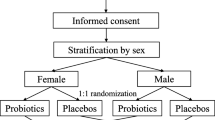Abstract
PURPOSE: A variety of adjuvant treatments and cytoprotective agents have been proposed to lessen the toxicity of radiation therapy. The following study was designed to evaluate the benefit of six agents or combinations using anastomotic bursting strength as a measure of transmural radiation injury. METHODS: The 40-Gy study consisted of the following. Seventy-two male Sprague-Dawley rats were divided into eight equal groups: nonradiated control, radiated untreated control, and six radiated treated groups. The radioprotective treatments included ribose-cysteine (RibCys), WR-2721, glutamine, vitamin E, MgCl2/adenosine triphosphate, and RibCys/glutamine in combination. Radiated animals received 40 Gy to the abdomen. Two weeks after radiation, all animals underwent small bowel and colonic resection with primary anastomosis. Animals were sacrificed one week postoperatively, at which time anastomoses were evaluated and bursting strengths determined. The 70-Gy study consisted of the following. The same protocol was repeated for five groups of nine rats divided into nonradiated, radiated untreated, and three radiated treated groups receiving RibCys (8 mmol/kg), RibCys (20 mmol/kg), and WR-2721. All radiated animals received 70-Gy doses. RESULTS: In the 40-Gy group, there were 10 radiation-related deaths and 6 anastomotic leaks among 70 rats studied. None of the differences between groups were significant. Nonradiated control group small bowel and large bowel anastomotic bursting pressures were significantly elevated compared with all radiated groups. Compared with radiated controls, there were significant improvements in small bowel bursting strength in the RibCys, WR-2721, RibCys-glutamine, and vitamin E groups and significant improvement in colonic bursting strength in MgCl2/adenosine triphosphate, WR-2721, and RibCys groups. In the 70-Gy group, all nine nonradiated control rats survived. All eight untreated radiated control rats died, four of eight WR-2721 animals died (P=0.03), all RibCys (8 mmol/kg) animals died (P=0.03), and three of nine treated with RibCys (20 mmol/kg) survived (P=0.08). CONCLUSIONS: WR-2721 and RibCys gave consistent protection against large and small bowel radiation injury. The lower incidence of treatment-related toxicity and potentially equal or greater radioprotective effects may make RibCys more clinically useful than WR-2721.
Similar content being viewed by others
References
Bubrick MP. Radiation injuries to the small and large intestine. In: Gordon PH, Nivatvongs S, eds. Principles and practice of surgery for the colon, rectum and anus. St. Louis: Quality Medical Publishing, 1992:835–54.
Blake DP, Bubrick MP, Kochsiek GG,et al. Low anterior anastomotic dehiscence following preoperative irradiation with 6000 rads. Dis Colon Rectum 1984;27:176–81.
Anseline PF, Lavery IC, Fazio VW, Jagelman DG, Weakley FL. Radiation injury of the rectum: evaluation of surgical treatment. Ann Surg 1981;194:716–24.
Galland RB, Spencer J. Surgical aspects of radiation injury to the intestine. Br J Surg 1979;66:135–8.
Russell JC, Welch JP. Operative management of radiation injuries of the intestinal tract. Am J Surg 1979;137:433–42.
Senagore A, Milsom JW, Chaudry IH, Luchtefeld MA, Mazier WP. Reduction of pre-operative radiation injury by ATP-magnesium chloride [abstract]. 90th Annual Meeting of The American Society of Colon and Rectal Surgeons, Boston, MA, 1991.
Roberts JC. Amino acids and their derivatives as radioprotective agents. Amino Acids 1992;3:25–52.
Empey LR, Pap JD, Jewell LD, Fedorak RN. Mucosal protective effects of vitamin E and misoprostol during acute radiation-induced enteritis in rats. Dig Dis Sci 1992;37:205–14.
Klimberg VS, Salloum RM, Kasper M,et al. Oral glutamine accelerates healing of the small intestine and improves outcome after whole abdominal radiation. Arch Surg 1990;125:1040–5.
Hanson WR. Radiation protection of murine intestine by WR-2721, 16, 16-dimethyl prostaglandin E2, and the combination of both agents. Radiat Res 1987;3:361–87.
Liu T, Liu Y, He S, Zhang Z, Kligerman MM. Use of radiation with or without WR-2721 in advanced rectal cancer. Cancer 1992;69:2820–5.
Rowe JK, Zera RT, Madoff RD,et al. Protective effect of RibCys following high-dose irradiation of the rectosigmoid. Dis Colon Rectum 1993;36:681–8.
Ellis F. The relationship of biologic effect to dose-time fractionation factors in radiotherapy. Curr Top Radiat Res 1968;4:357–97.
Chaudry IH. Preparation of ATP-MgCl2 and precautions for its use in the study and treatment of shock and ischemia. Am J Physiol 1982;242:R604–5.
Devereux DF, Chandler JJ, Eisenstat T, Zinkin L. Efficacy of an absorbable mesh in keeping the small bowel out of the human pelvis following surgery. Dis Colon Rectum 1988;31:17–21.
Yuhas JM, Storer JB. Differential chemoprotection of normal and malignant tissues. J Natl Cancer Inst 1969;42:331–5.
Kligerman MM, Turrisi AT, Urtasun RC,et al. Final report of Phase I trial of WR-2721 before protracted fractionated radiation therapy. Int J Radiat Oncol Biol Phys 1988;14:1119–22.
Roberts JC, Nagasawa HT, Zera RT, Fricke RF, Goon DJ. Prodrugs of L-cysteine as protective agents against acetaminophen-induced hepatotoxicity: 2-(polyhyrdoxyalkyl) and 2-(polyacetoxyalkyl) thiazolidine-4(R) = carboxylic acids. J Med Chem 1987;30:1891–6.
Patt HM, Tyree EB, Staube KL, Smith DE. Cysteine protection against X irradiation. Science 1949;110:213–4.
Taniguchi M, Hirayama K, Yamaguchi K, Tateishi N, Suzuki M. Nutritional aspects of glutathione metabolism and function. In: Dolphin D, Poulson R, Avramovic O, eds. Glutathione: chemical, biochemical and medical aspects, part B. New York: Wiley & Sons, 1989:645–67.
Black WC, Gomez LS, Yuhas JM, Kligerman MM. Quantitation of the late effects of x-radiation on the large intestine. Cancer 1980;45:444–51.
Delaney JP, Bonsack M, Hall P. Intestinal radioprotection by two new agents applied topically. Ann Surg 1992;216:4117–2.
Author information
Authors and Affiliations
Additional information
Supported by the 1993 ASCRS/ETHICON Surgical Research Fellowship Award and the Minneapolis Medical Research Foundation. Read at the meeting of The American Society of Colon and Rectal Surgeons, Orlando, Florida, May 8 to 13, 1994.
About this article
Cite this article
Carroll, M.P., Zera, R.T., Roberts, J.C. et al. Efficacy of radioprotective agents in preventing small and large bowel radiation injury. Dis Colon Rectum 38, 716–722 (1995). https://doi.org/10.1007/BF02048028
Issue Date:
DOI: https://doi.org/10.1007/BF02048028




